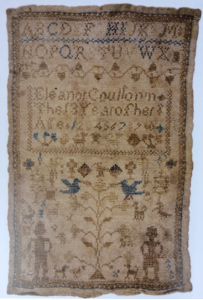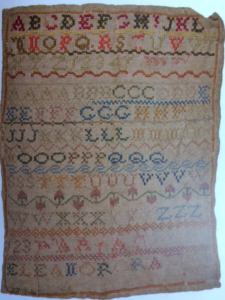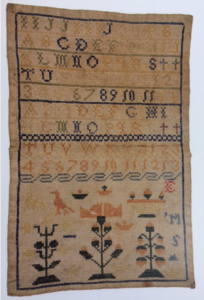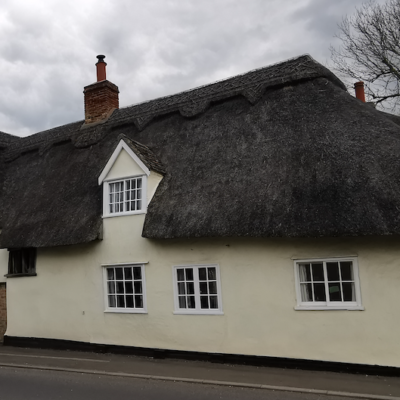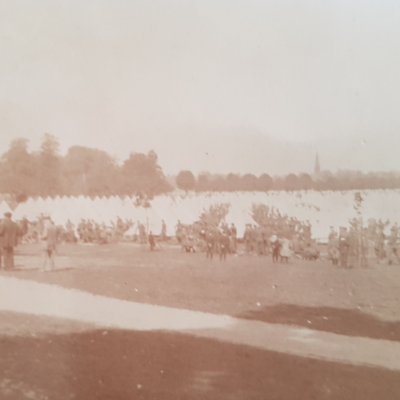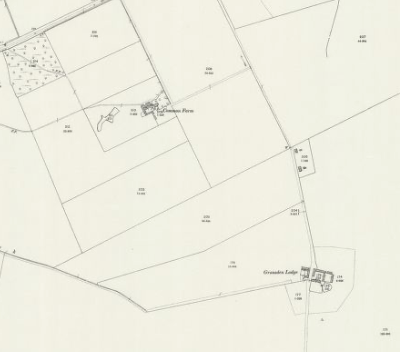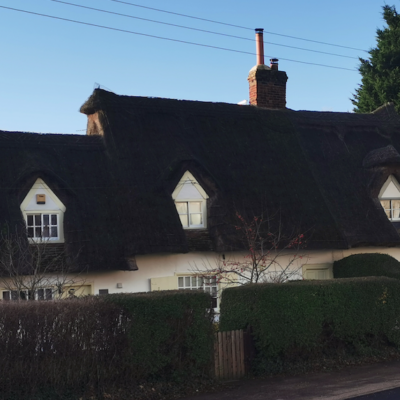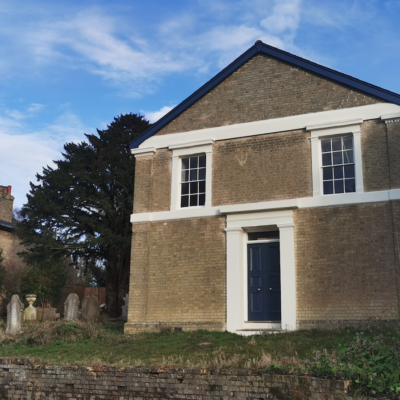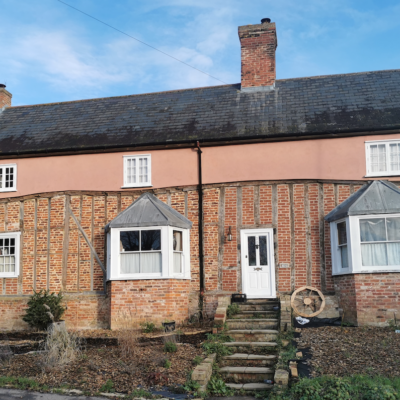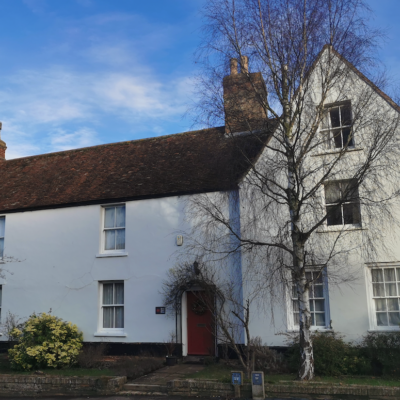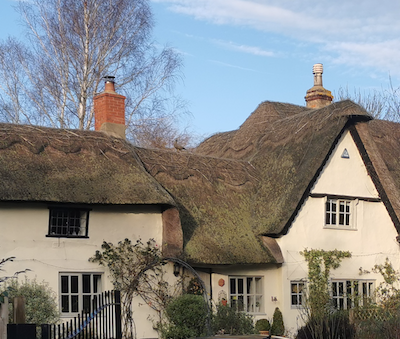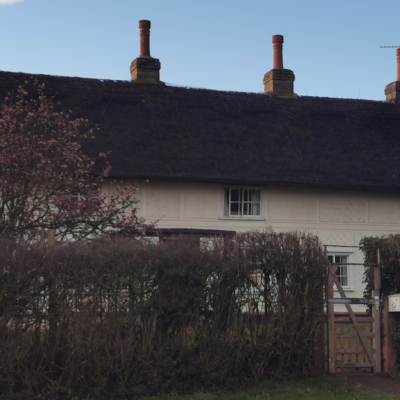Search by topic
- archaeology
- architecture
- bricklayer
- Building of Local Interest
- carpenter
- church
- crime
- dressmaker
- fire
- Great Eastern Railway
- listed building
- medieval
- oral history
- Public House
- Rattee & Kett
- Religious House
- Roman
- scholar
- school
- Then and Now
- tudor
- women
- work
- world war one
- world war two
Search by text
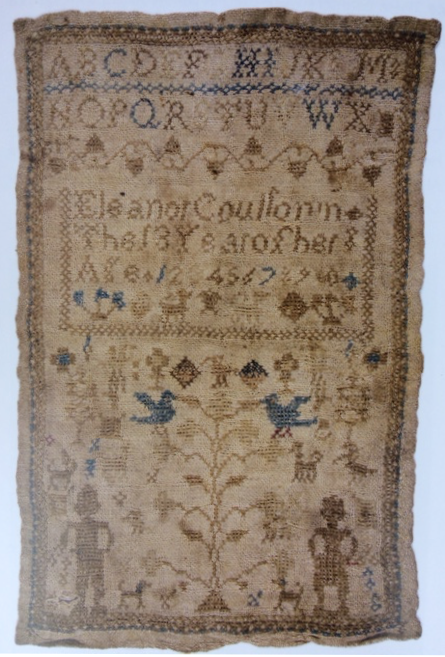 Eleanor Coulson sampler (CAMFK98.51), Caxton
Eleanor Coulson sampler (CAMFK98.51), Caxton Caxton Data
Mike Petty's Caxton Scrapbook
Sources of Information about Caxton:
Mike Petty’s Scrapbook:
https://archive.org/details/CaxtonScrapbook1897To1990
Notes on Cambridgeshire Villages: No 2 Caxton by W.M.Palmer (Camb Chron. 1926)
Veni Caxston paupere tecto,
Sed pauperiore lecto,
Quidem habent me suspectum
Esse maculis infectum.
Pestis unde exui vestem
Vocans hospitem in testem.
Written by Richard Braithwaite ‘Drunken Barnaby’ in a description of his journey to the North of England in 1638.
I came to a poor house in Caxton
But an even worse bed.
Some there though I was
Infected with spots of the plague.
So I threw off my clothes
Calling the innkeeper as witness.
The Museum of Cambridge holds three samplers that have been handed down by members of the same family until being donated to the museum in 185.
Caroline Ferguson made the following notes for a blog about the samplers:
This blog aims to show that we must not always take the details of the Museum Accessions Register at face value. Our story starts with information from 1951 that the samplers were made by the donor’s mother, grandmother and great grandmother who were all called Eleanor. The samplers were made in Caxton, Cambridgeshire, and were dated from 1800 to 1850. Through family history sites we have been able to clarify some details about the donor and her forebears and realise that things are not always as they seem.
Samplers have been stitched since the 1600s. They were first used as a reference tool for embroidery stitches, techniques and patterns but later played an important part in the education of girls in literacy, numeracy and sewing. They serve as a record of the education of girls before education become mandatory in 1870.
The oldest sampler (CAMFK 98.51 ) bears the name Eleanor Coulson and the detail that she stitched it at the age of 13. Besides the alphabet and name and a typical row of strawberries, this Eleanor stitched an intricate biblical scene of Adam and Eve and the Tree of Knowledge in the bottom half. The Museum Accession Register suggests that the sampler was made around 1800.
The second sampler (CAMFK 99.51) has the name Eleanor Gray but no date or age of maker. Its suggested date is 1830. The sampler is simpler in design but uses a broader colour palette. The letters of the alphabet are repeated as if in practice for future writing.
The third sampler (CAMFK 100.51) has no name or date merely the identifying initials E (in red) and M and S (in blue). Again the colour palette of the threads is enlarged. Like her forebears the maker stitches letters but also includes numbers, birds and tree motifs to decorate the bottom section. The donor gave date of 1851.
The family history of the Coulson (var. Colson, Colsen, Coleson) in Caxton is very complex as it was the most common surname in the area and there are a large number of interrelated family units. Research shows that there was an Eleanor Coulson (Colson) who was born in 1884. However it is difficult to track her thereafter.
Assuming that the samplers were made by succeeding generations it is more plausible that sampler 1 was made by the Eleanor Coulson who was born in 1818 and so can be dated to c.1830. This was the Eleanor who married George Gray in 1838 and had numerous children including a further Eleanor Gray (1844 – 1927) who is likely to have made sampler 2 around 1850.
Who though made sampler 3? This second Eleanor Gray married Samuel Bavister, an agricultural labourer, and her only daughter Alice Eleanor Bavister, then an elderly lady, was our donor but not the sampler maker. Among the many daughters of Eleanor Gray (nee Coulson) were, Elizabeth Mary and Mary Ann. Since there is both an E and an M it could have been made by Elizabeth Mary (1840 -1852) but the range of colours made possible by the use of synthetic dyes, not freely available until the 1870s, suggests that it was made by a further generation. In later life Eleanor Gray (nee Coulson) lived with her daughter Mary Ann and her husband John Shadwell. Mary Ann had an illegitimate daughter Elizabeth Mary in 1867 and it is possible that she used the surname Shadwell and is the E M S of sampler 3. This would date the piece to around.1880. Textile history supports these revised dates. We can also assume that the samplers were probably made at school. Caxton history shows that there were 2 dame schools operating in the village between 1787 and 1836 and that the National school was operational from 1854. In the interim period there was some form of church school/Sunday school together with a resident teacher.
Census data also gives some interesting pointers. The 1851 entry has Eleanor Gray and her family plus her mother, Elizabeth Coulson. Eleanor’s husband George Gray is listed as ‘groom’. Elizabeth Coulson( b 1791) is entered as a ‘letter carrier’ which was an important and responsible position at this time. Later censuses have Eleanor Gray in this role but she reverts to ‘dressmaker’ towards the end of her life. ‘Letter carriers’ would have had to have been both literate and numerate and both would have been socially above the normal agricultural worker.
This research indicates that the dates of the Coulson/Gray family samplers must be revised to c.1830, c.1850 and c.1880 and the story should just say that they were made by three generations (mother, daughter and granddaughter) of the same family. Not all their first names were Eleanor but all began with an E!
Further notes added by Roger Lilley in 2024:
In 1939 Alice Eleanor Bavister, the donor, was living at 77 Sedgwick Street in Cambridge. She was single and aged 81. She was still at this address in 1945. She died in Norfolk in 1956. Alice’s mother, Eleanor Gray, died in Caxton in 1927.
Contribute
Do you have any information about the people or places in this article? If so, then please let us know using the Contact page or by emailing capturingcambridge@
License
This work is licensed under CC BY-NC-SA 4.0








